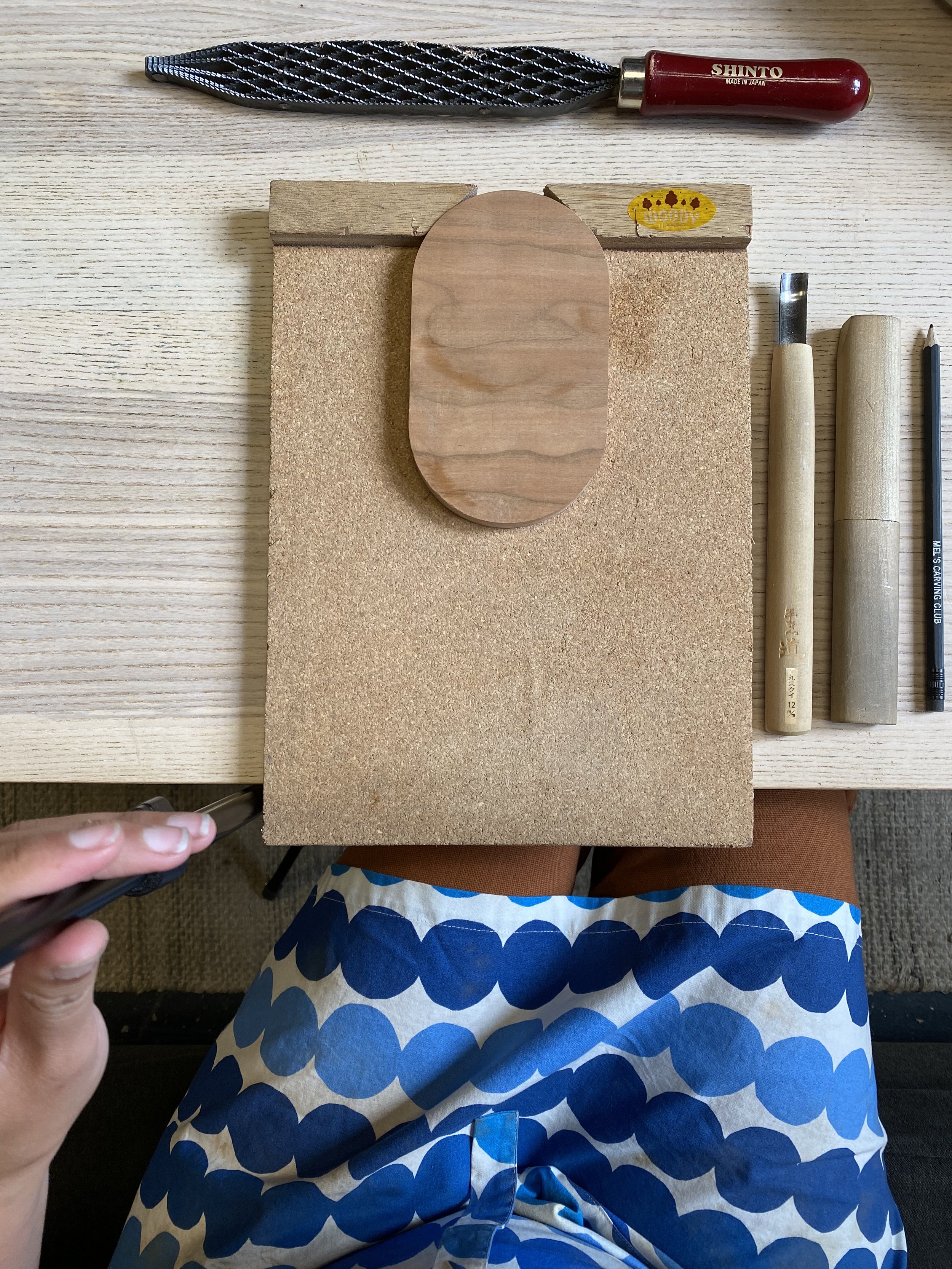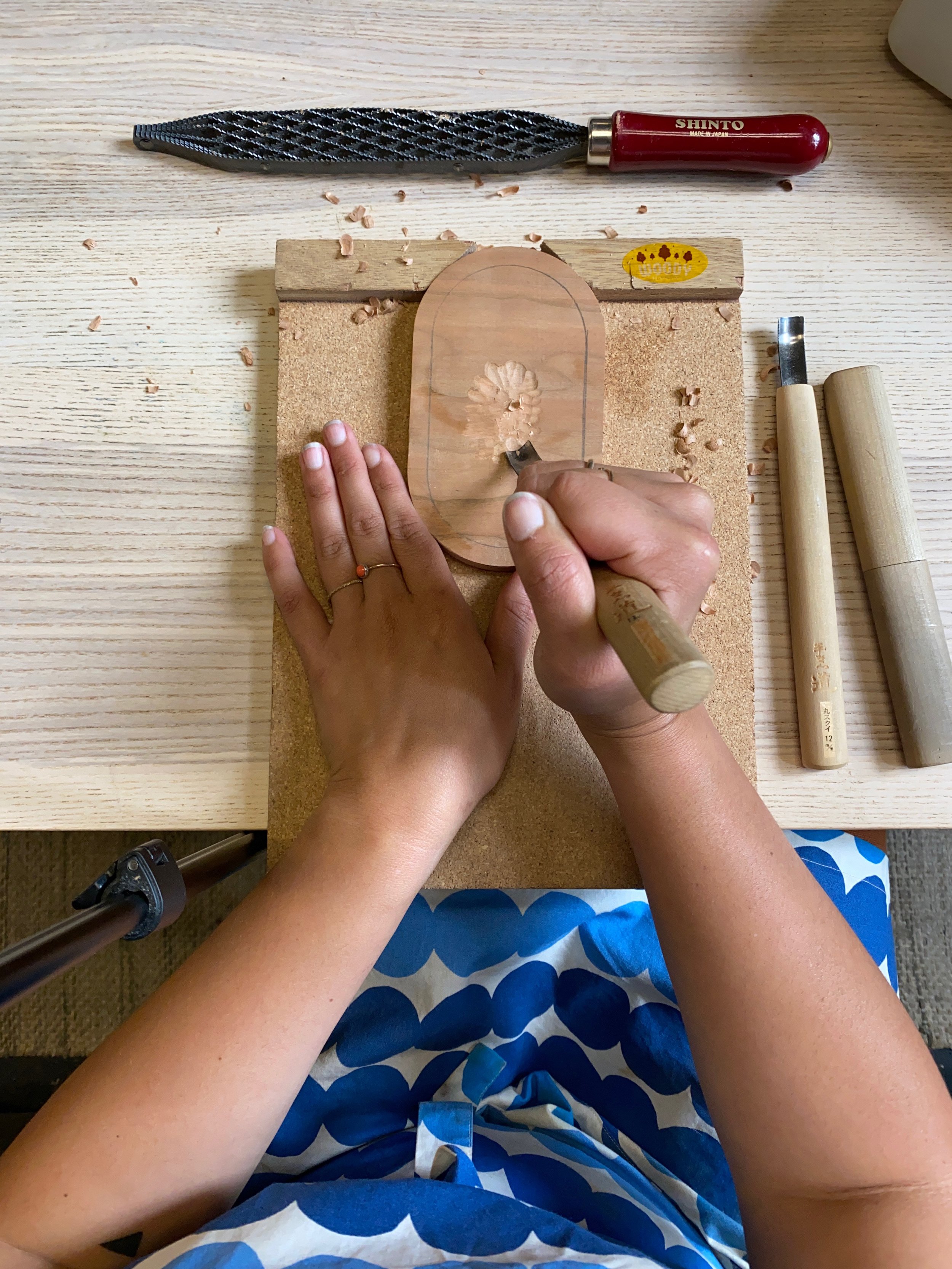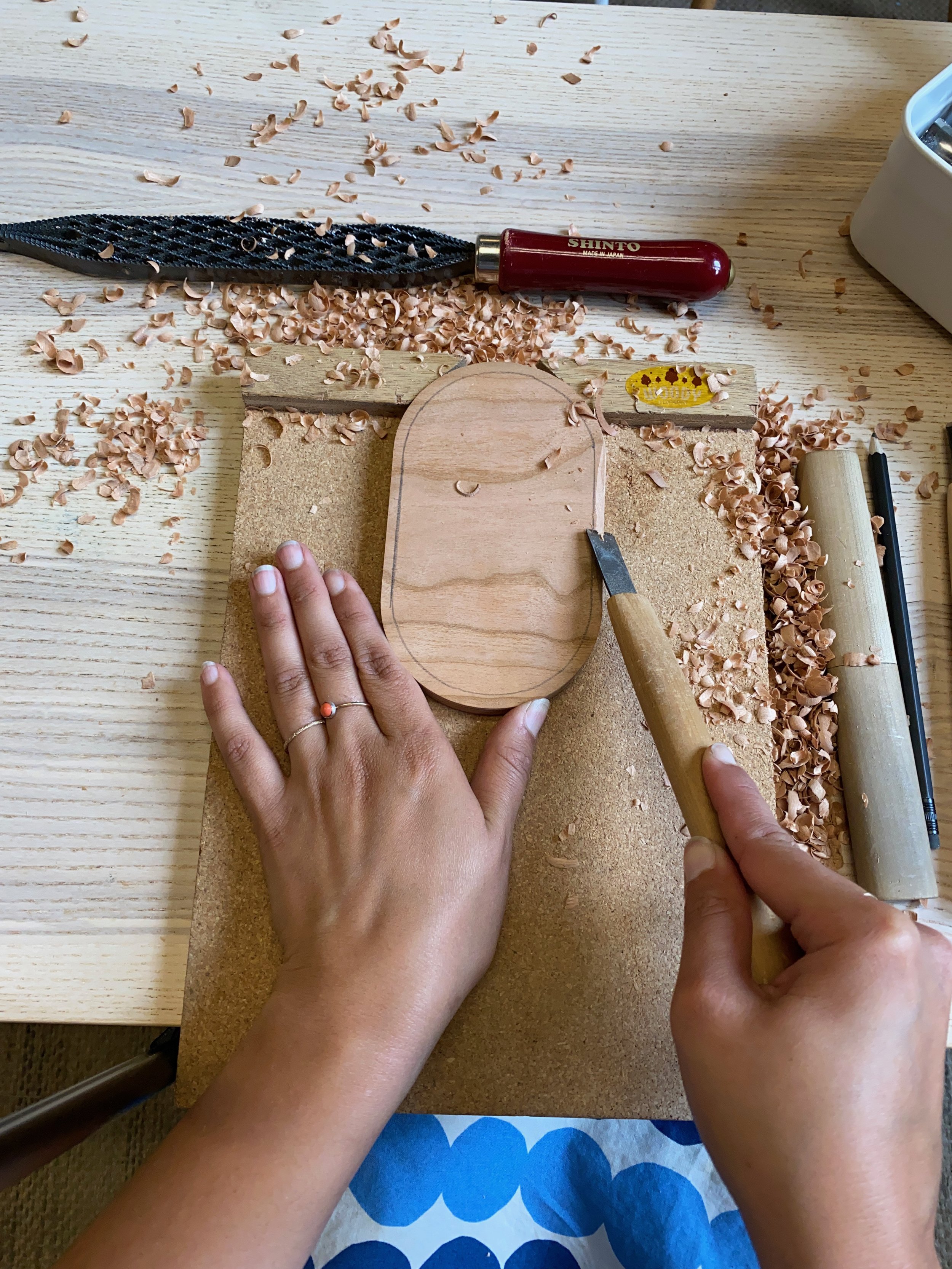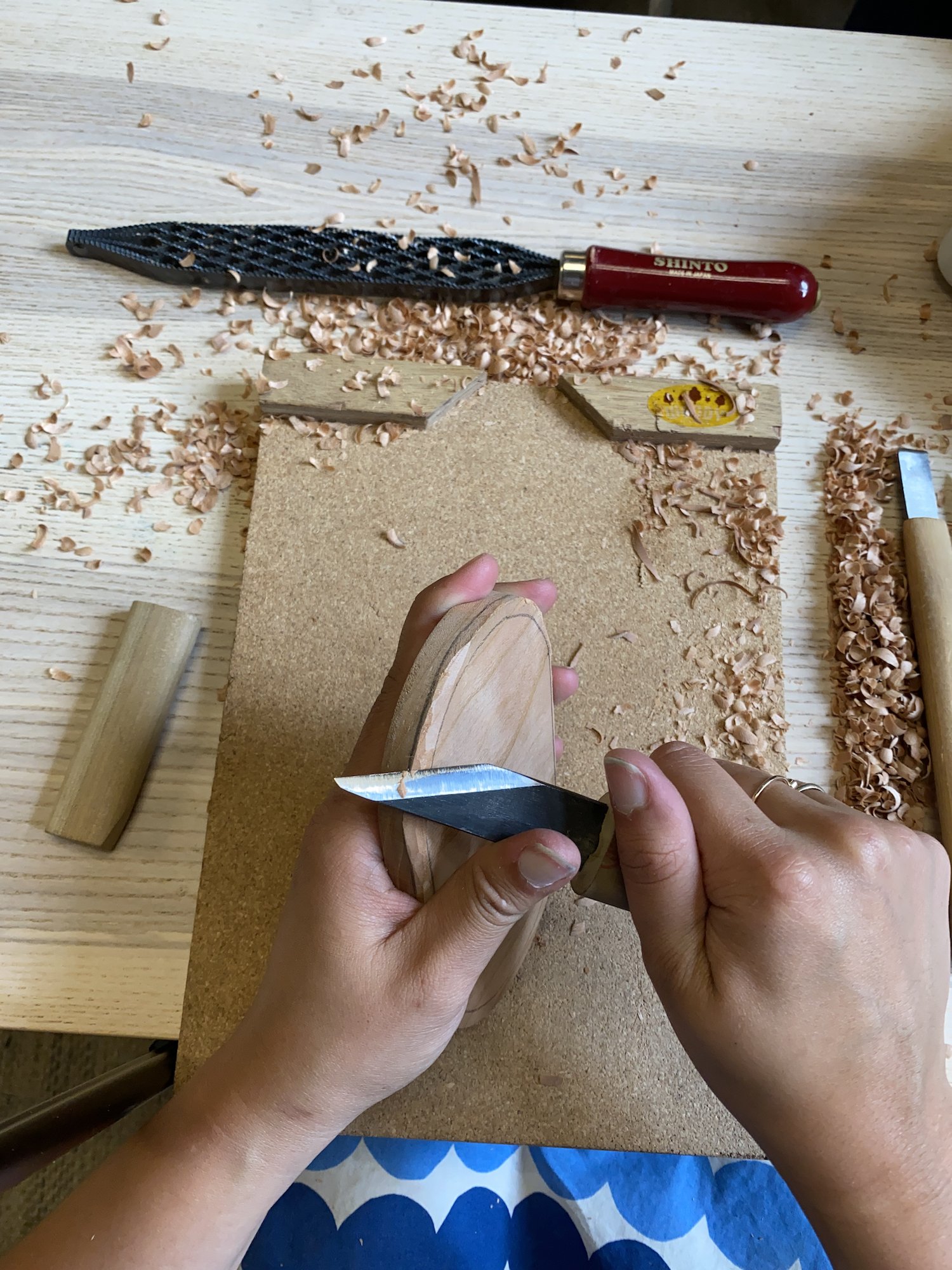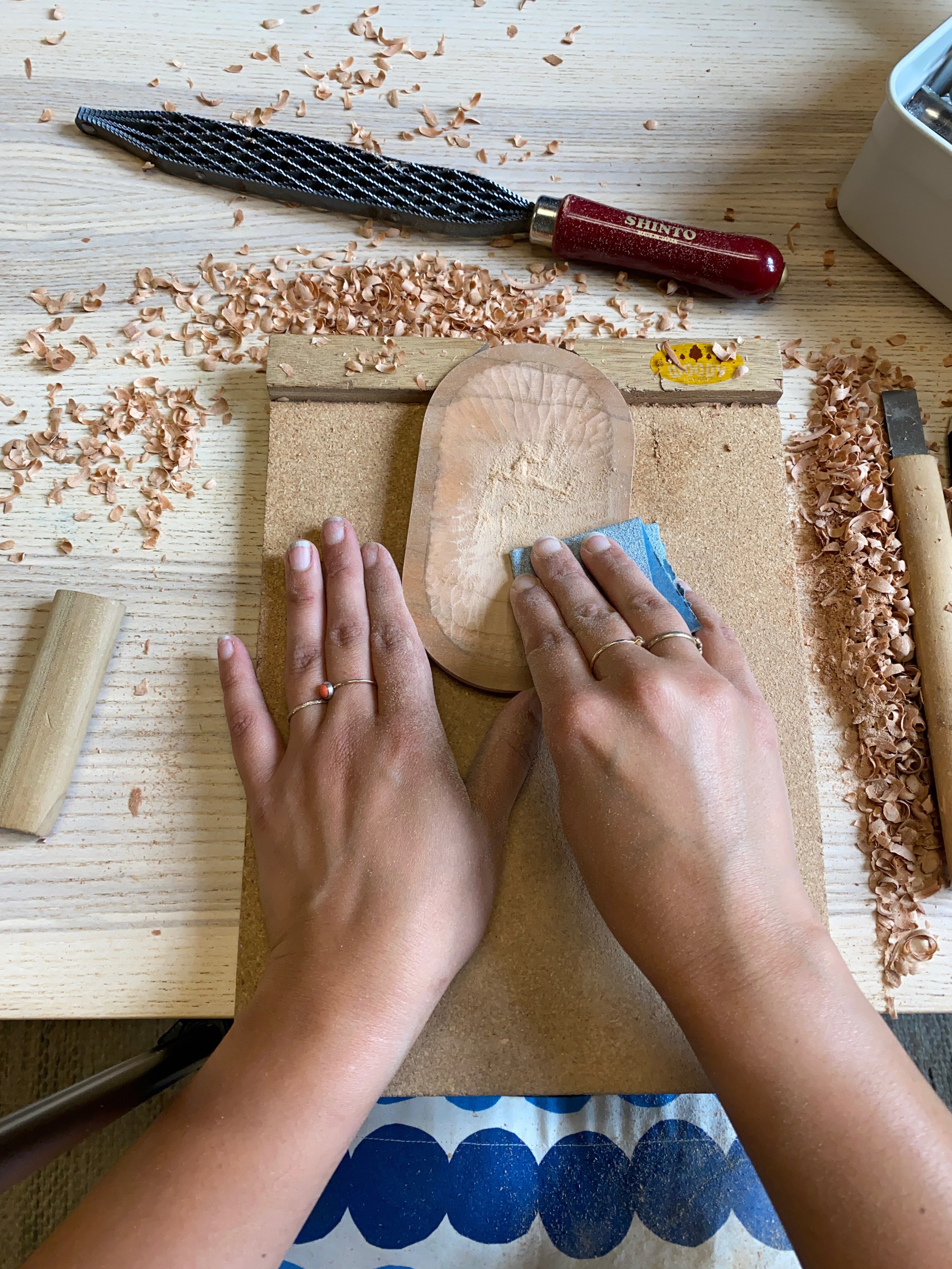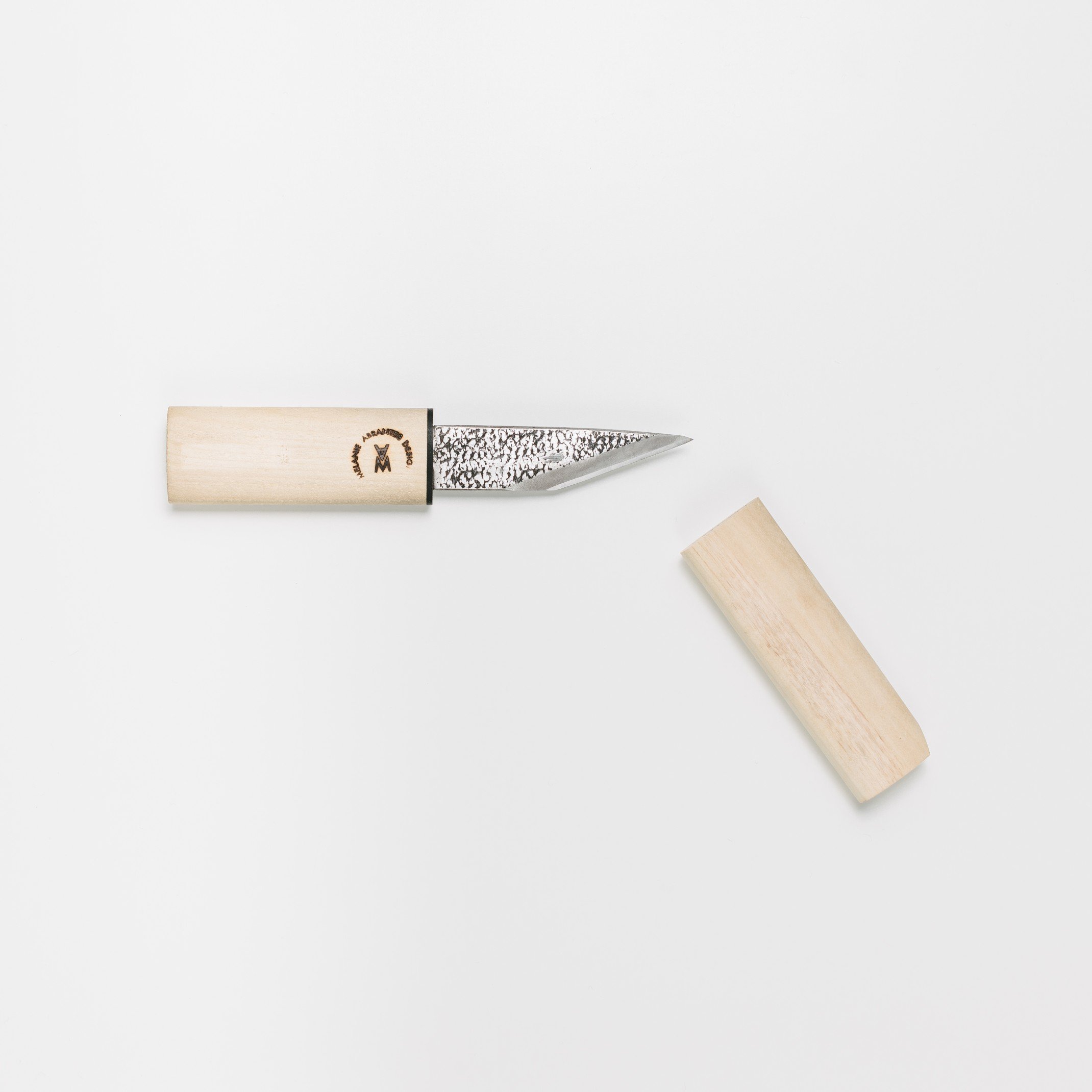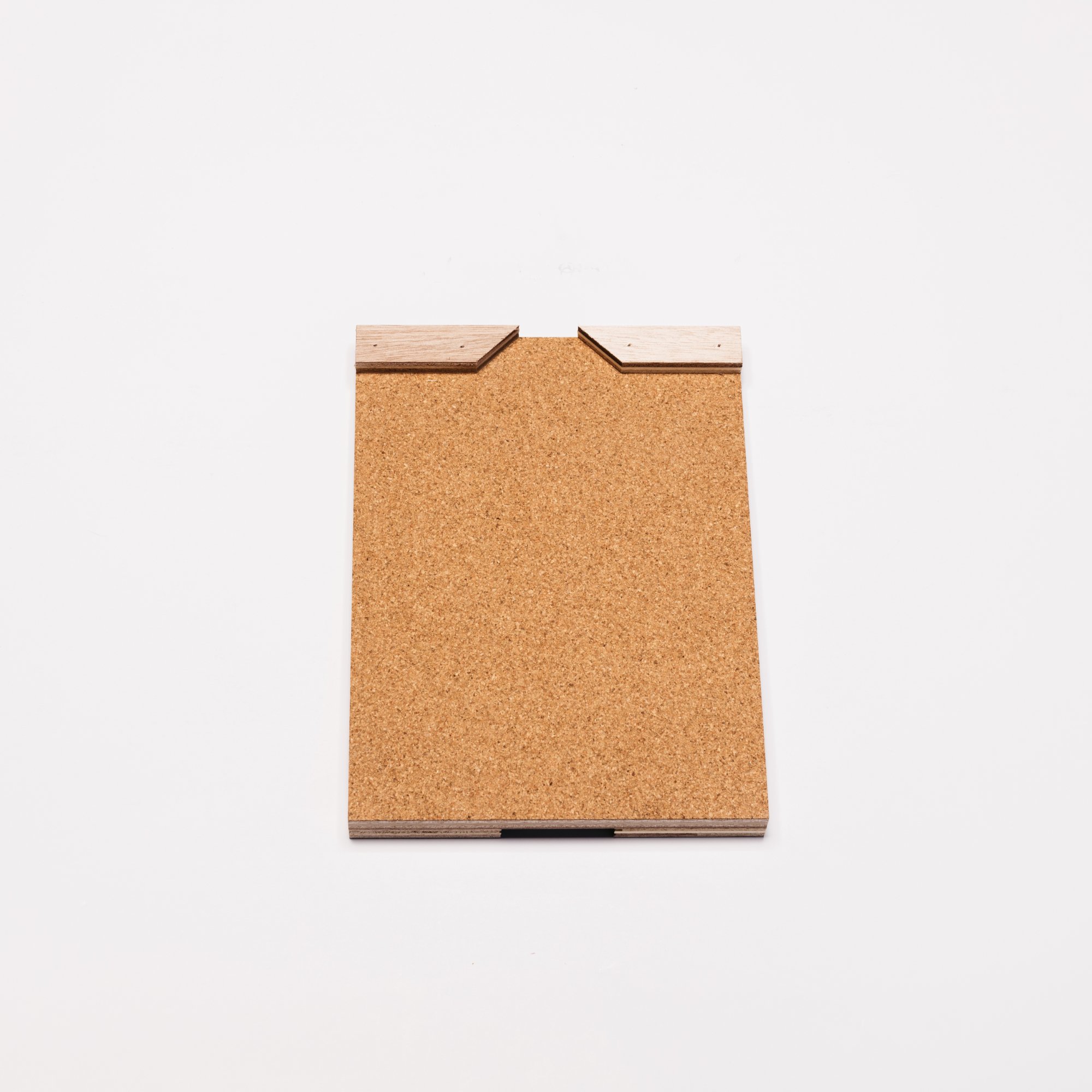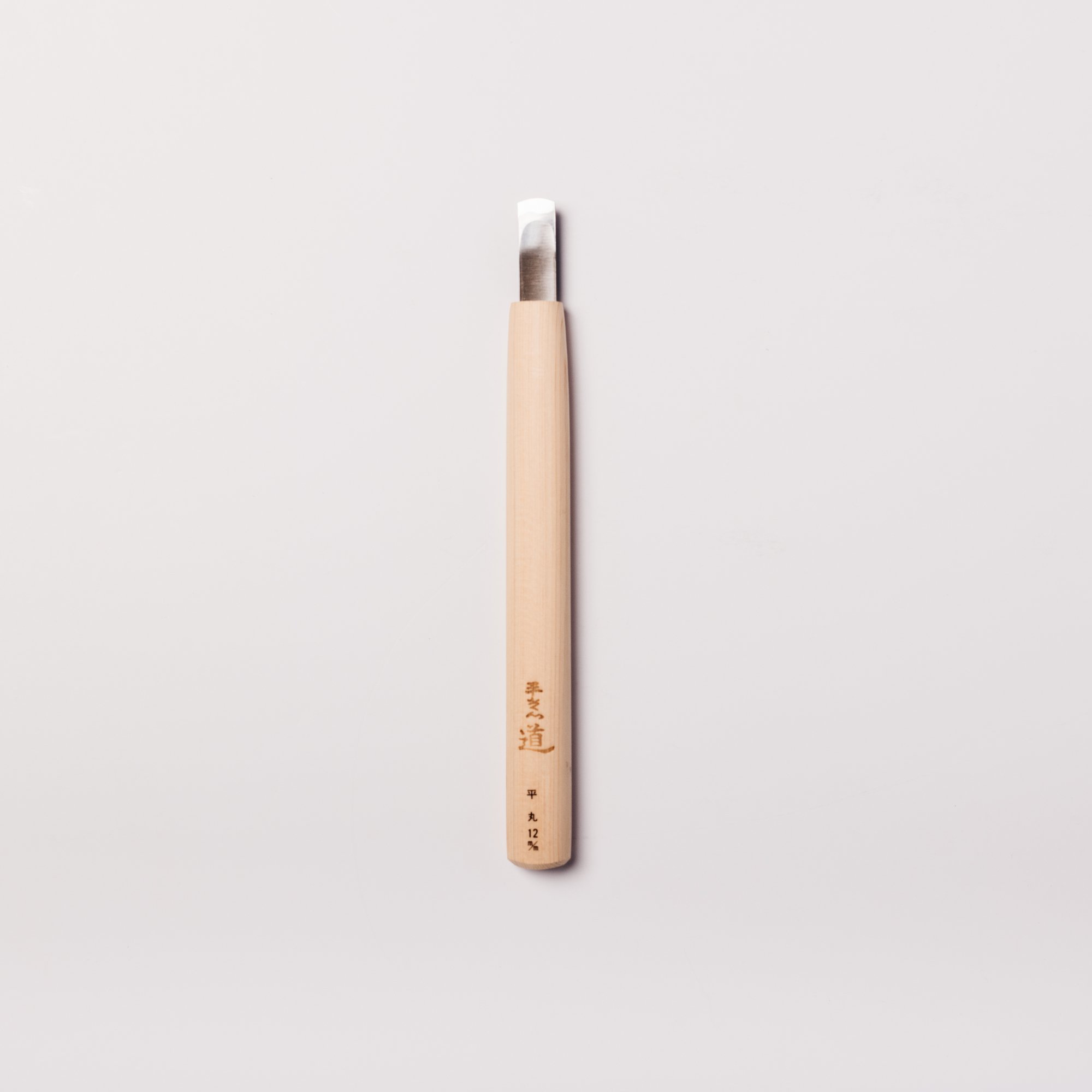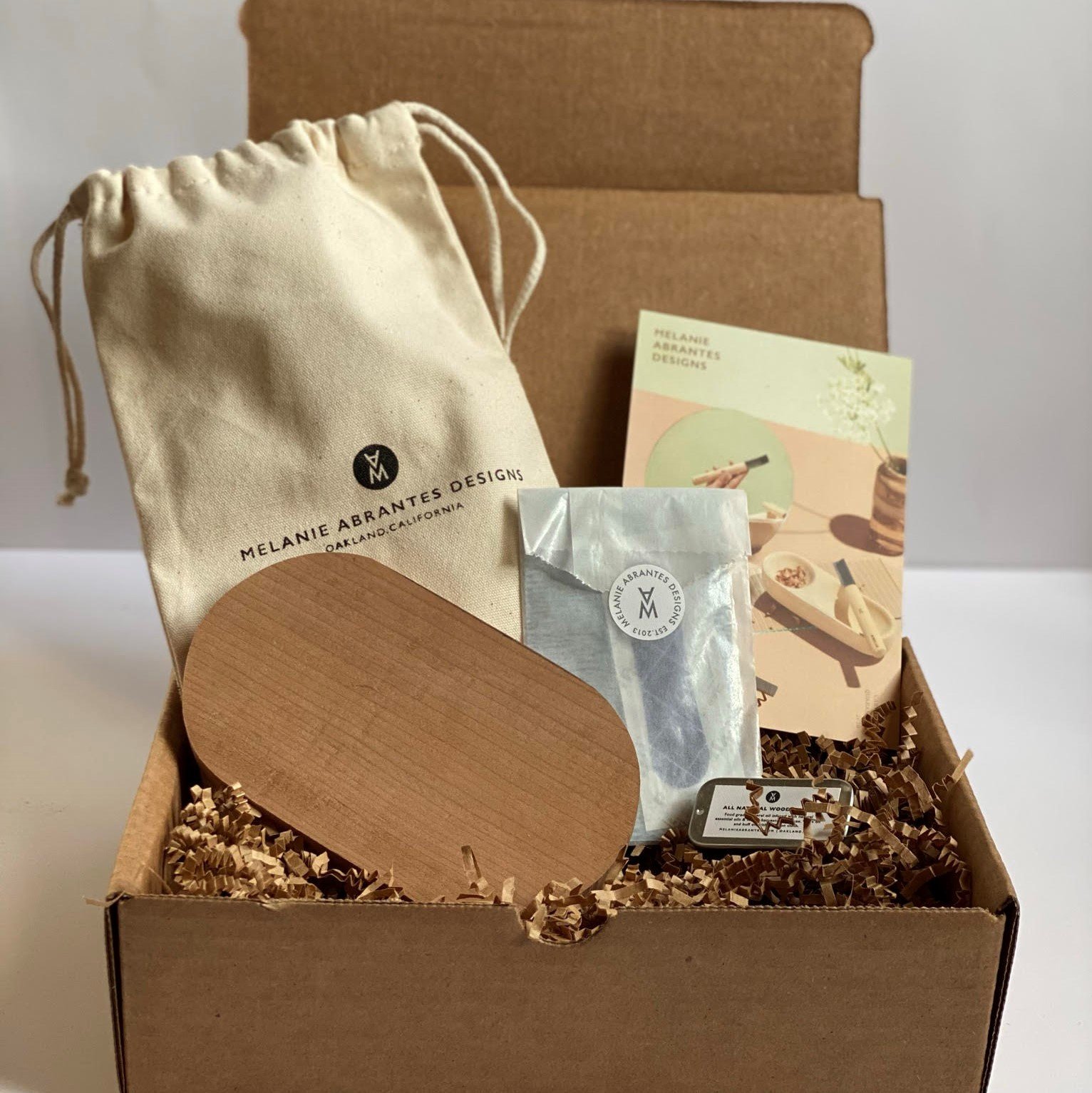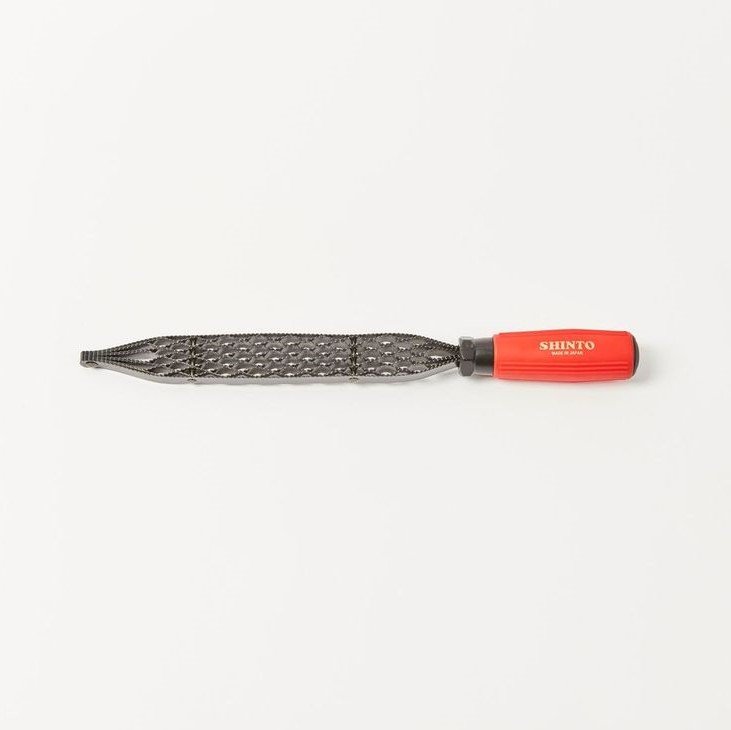FREE DIY SERIES #3 - oval plate
SAFETY TIPS:
Always keep the blade pointed away from you when carving
Keep your tools sharp for easier and safer carving!
WARNING: Tools are extremely sharp and may cause injury. Please handle with caution.
Step 1: Carve the INTERIOR OF THE PLATE
To make this wooden plate you will need a gouge, knife or straight chisel, rasp, pencil and a bench hook to secure the piece.
Position the blank on a table or bench hook with the straight edge facing you. Draw a line about 1/8”-1/4” from the edge of your wooden plate all the way around to serve as an outline for carving the inside.
To carve the interior of the oval plate, begin with the gouge facing away from you. Start removing material in the middle of the piece and work your way to the line you drew, rotating your piece as you go. Remove thin layers until you reach your desired depth.
Always keep your non-dominant hand behind the gouge so you don’t accidentally slip and hurt yourself. Remove wood until the walls are about 1/4” thick and evenly carved all around. Carve with the grain as much as possible.
sTEP 2: carve the back of the plate
When you’re finished with the inside of your plate, flip the piece over to work on the back. Draw a line that is 1/8” from the edge all around the perimeter.
Using the straight chisel or knife, carve away the back edge of the plate to create a bevel on the perimeter. Make sure the tool is always facing away from you while carving.
Using the push-cut, whittle the top and bottom edges of the plate until you reach the lines your drew to create the bevel.
Step 3: sand, finish and string with leather
Once you have you have finished the rough shape with your knife, take your rasp and smooth out all the edges. We like to use the Shinto rasp, but any rasp will work. This is great for working the end grain of your wood.
Sand each piece with the grain until the wood is even and smooth. Begin sanding with 80 grit and work your way up to 150 then 220 grit as each sandpaper dulls.
Use a cotton cloth to rub your pieces with a layer of wood butter. You’re finished, enjoy!


